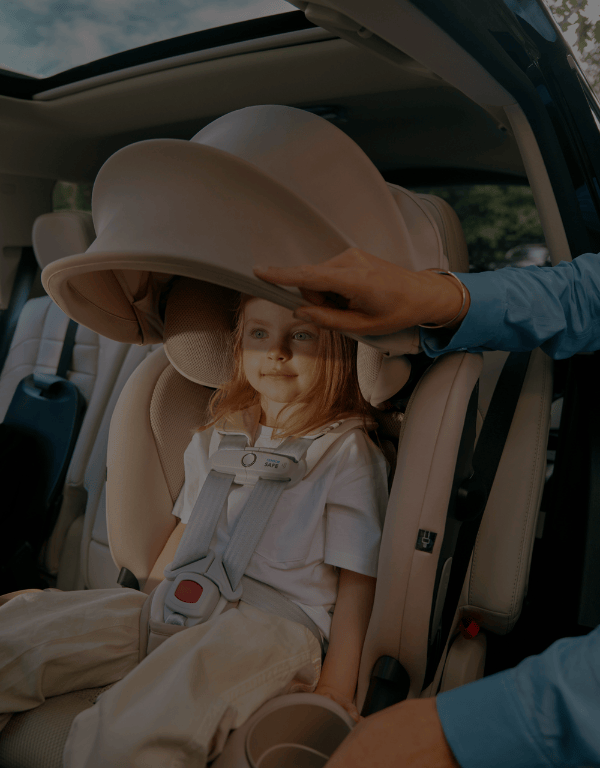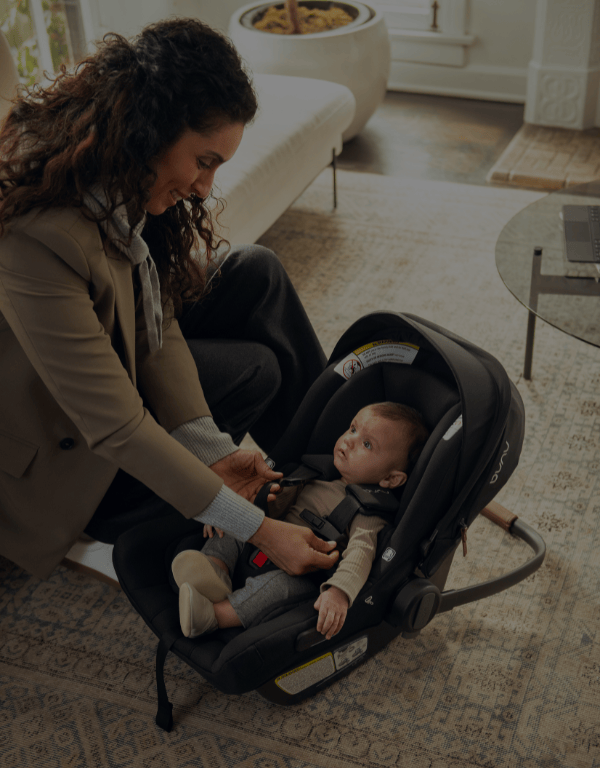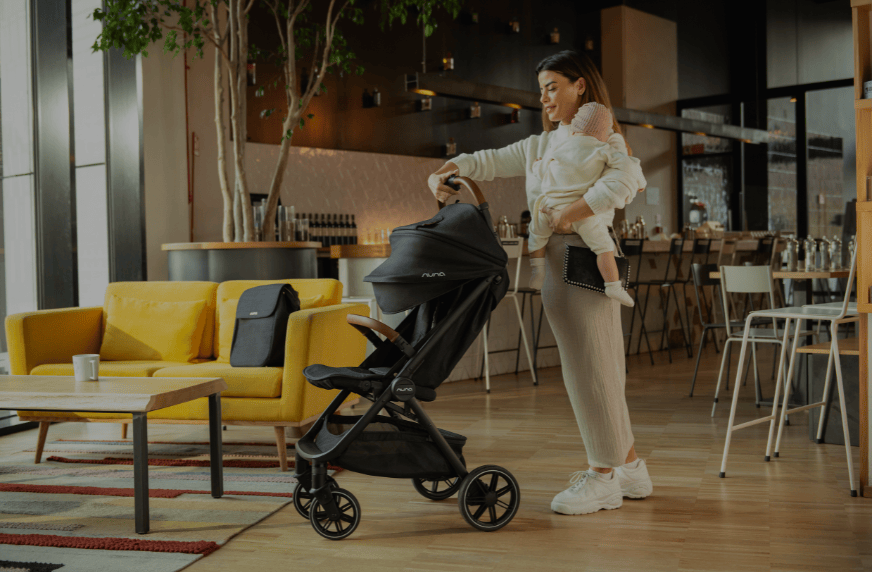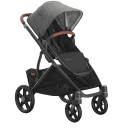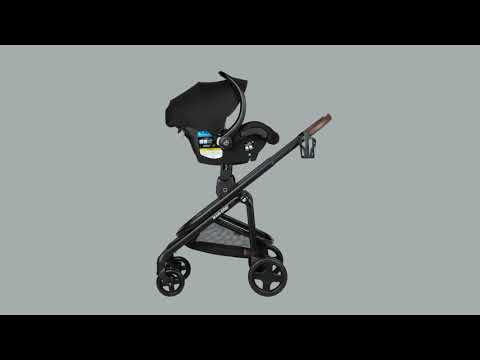
As a parent, keeping your baby safe and healthy is your top priority, and that includes protecting their delicate skin from the sun. But with so much information out there, it’s easy to feel overwhelmed. Is sunscreen safe for your baby? When should you start using it? And what are the best ways to keep your little one sun-safe?
Don’t stress—we’ve got you covered (with a broad-spectrum SPF)! In this guide, we’ll walk you through everything you need to know about sunscreen and sun protection for babies. We’ll break down the guidelines, debunk common myths, and share practical tips to ensure your baby can enjoy the great outdoors safely. (If only managing mosquitoes were so easy.)
Why Sun Protection is Essential for Babies
Your baby’s skin is soft, delicate, and incredibly sensitive—much more so than your own. It’s thinner and has less melanin, the pigment that provides some built-in protection against the sun. That means your baby’s chubby cheeks and arms are extra vulnerable to the harmful effects of UV rays.
Why is this such a big deal? For starters, your baby’s skin will burn faster and more severely than an adult’s. Even a short time in the sun can lead to painful sunburns, which are uncomfortable and cause serious long-term damage. According to the Skin Cancer Foundation, sunburns in infancy and childhood can increase the risk of skin cancer later in life, including melanoma—the most dangerous type of skin cancer.
When is it Safe to Use Sunscreen on Babies?
The American Academy of Pediatrics (AAP) recommends keeping babies under six months out of direct and indirect sunlight. If you must be outdoors with your little one, they advise only using sunscreen on small areas of the body if shade isn’t available. Why the wait? Babies under six months have much more sensitive skin and are more prone to irritation than older infants and adults. Their skin also absorbs chemicals more easily, making them more susceptible to any potential side effects of sunblock ingredients.
But the good news is that there are plenty of ways to protect your peanut from the sun without sunscreen! Here are some simple and effective alternatives to sunscreen for infants:
- Shady Baby: Whenever you’re outside, stay in the shade as much as possible. Sit under a tree in the park, use an umbrella or sunshade at the beach, and make use of your stroller’s canopy. The goal is to minimize direct sun exposure, especially during peak hours between 10 AM and 4 PM when the sun’s rays are the strongest.
- Dress Smart: Clothing is an excellent (and easy!) barrier against the sun. Choose lightweight, long-sleeved shirts, and pants, and wide-brimmed hats that cover your baby’s face, neck, and ears. Look for clothes made with tightly woven fabrics or those that offer UV protection. And don’t forget those tiny tootsies—soft, breathable socks can help protect little feet from the sun, too.
- Use Sunglasses: Yes, babies can wear sunglasses! Look for sunglasses that block 100% of UVA and UVB rays and fit snugly on your baby’s face. Introducing a pair of shades early makes it less likely your toddler will refuse to wear them.
- Don’t Forget a Hat: A cute, wide-brimmed hat can be a lifesaver when it comes to protecting your baby’s face, ears, and neck from the sun. Look for hats with a chin strap to help keep them in place, even when your baby is on the move.
- Plan Outdoor Time Wisely: Try to schedule outdoor activities for early morning or late afternoon when the sun is less intense.
Choosing the Right Sunscreen for Babies
There is certainly no shortage of sunscreen choices for your little one—anyone else get too-many-choices paralysis?—so picking the right one for your baby can feel overwhelming. (This is where you should congratulate yourself for realizing your baby needs sunscreen in the first place—that’s a next level parenting move!) Any baby-friendly sunscreen should be:
- Broad-Spectrum: “Broad-spectrum” means that the sunscreen protects against both UVA and UVB rays. UVA rays can prematurely age the skin, while UVB rays can cause sunburn. And both types of rays increase the risk of skin cancer.
- SPF 30 or Higher: The SPF, or Sun Protection Factor, indicates how well the sunscreen will protect your baby’s skin. The American Academy of Dermatology (AAD) recommends that all babies and children, regardless of skin tone, wear sunscreen with an SPF of 30 or higher.
Mineral vs. Chemical Sunscreens
There are two main types of sunscreens: Mineral (also known as physical) and chemical. Mineral sunscreens sit on top of the skin and provide a physical barrier against the sun’s rays. The active ingredients in these sunscreens are usually zinc oxide and titanium dioxide. They’re a great baby-friendly option because they start working immediately, and are less likely to irritate sensitive skin.
On the other hand, chemical sunscreens absorb into your skin and convert rays into non-damaging heat through a chemical reaction. While super effective, they often contain more active ingredients that aren’t always gentle on sensitive skin. Because they absorb so quickly, it can also be tough to know if you’ve missed any spots.
For the best and safest protection for are your baby, here are the ingredients to seek out and those to steer clear of:
The Good Guys
- Zinc Oxide: This mineral provides excellent broad-spectrum protection and is gentle on sensitive skin. It’s a white powder that sits on the skin and blocks UV rays—think the classic white nose you’d spot on a lifeguard.
- Titanium Dioxide: Another mineral that works similarly to zinc oxide, it’s effective and safe for sensitive skin.
The Less-Than-Good Guys
- Oxybenzone: This chemical is commonly found in sunscreens but can be absorbed through the skin and may cause hormonal disruptions.
- Retinyl Palmitate: A form of vitamin A that, when exposed to sunlight, can increase the risk of skin damage and may lead to skin tumors.
Before using any new sunscreen on your baby, make sure to do a patch test first. Apply a small amount on a small area of your baby’s skin and wait 24 hours to see if there’s any reaction. If there’s no redness or irritation, you’re good to go!
How to Apply Sunscreen on Babies
We don’t think applying sunscreen is on anyone’s list of “fun stuff to do at the outdoors,” but it’s an essential step in protecting your little one’s skin (and your peace of mind). Here’s how to ensure that your tiny beach bum receives the best protection under the sun:
- Choose the Right Sunscreen: Pick a baby-safe, broad-spectrum sunscreen with an SPF of 30 or higher. Choose a mineral-based sunscreens with zinc oxide or titanium dioxide for the gentlest protection.
- Apply Generously and Evenly: Squeeze a generous amount of sunscreen into your hand. For babies older than six months, think of applying about a pea-sized amount for smaller areas and more for larger areas—don’t be shy! Gently rub it onto all exposed skin, covering all those easy-to-miss spots like the ears, back of the neck, and tops of the feet.
- Don’t Forget the Face: Use a gentle touch to apply sunscreen on your baby’s face. A good trick is to put a little on your fingers first, then dab it on their cheeks, nose, and forehead before blending it in. Be especially careful around the eyes and mouth.
- Timing is Everything: Apply sunscreen at least 15 minutes before heading outside.
- Reapplication: If your baby splashes around in water or gets sweaty, reapply sunscreen immediately afterward. Even water-resistant sunscreens should be reapplied after about 40-80 minutes of water play or sweating. And if you’re spending the day outside, make sure to reapply sunscreen every two hours to keep your baby’s skin protected.
Debunking Common Myths and Misconceptions About Sunscreen for Babies
There are so many myths and misconceptions about protecting your baby from the sun that it can be hard to know what’s best! Let’s clear up some of the most common myths with evidence-based facts (science!) to ensure you have the right info to keep your little one safe.
Myth 1: Sunscreen is Harmful to Your Baby’s Skin
Fact: While it’s true that certain ingredients can be irritating or potentially harmful, choosing a baby-specific, mineral-based sunscreen can reduce these risks. Sunscreens with zinc oxide or titanium dioxide are gentle on sensitive skin and sit on top of the skin to physically block UV rays rather than being absorbed. Always check the ingredients and avoid those with harmful chemicals like oxybenzone and retinyl palmitate.
Myth 2: Babies Don’t Need Sunscreen on Cloudy Days
Fact: UV rays can penetrate clouds, meaning your baby can still get sunburned even when it’s overcast (up to 89% of UV rays can pass through clouds!). Always apply sunscreen and use other sun protection methods when outdoors with your little one, regardless of the weather.
Myth 3: Babies with Darker Skin Don’t Need Sunscreen
Fact: While it’s true that melanin in darker skin provides some natural protection against UV rays, it doesn’t make babies immune to sunburn or the long-term effects of sun exposure. All babies need sunscreen and other sun protection measures regardless of skin tone. Darker skin can still suffer from sun damage, and the consequences of UV exposure can be just as serious.
Myth 4: One Application of Sunscreen is Enough for the Day
Fact: Sunscreen should be reapplied every two hours or immediately after swimming, sweating, or towel drying. A single application in the morning isn’t enough to protect your baby throughout the day. Regular reapplication ensures continuous protection and helps prevent sunburn and skin damage.
Myth 5: Sunscreen is Only Necessary During the Summer
Fact: UV rays exist year-round, and sun protection is just as important in the winter as it is in the summer. Snow can even reflect UV rays, increasing the risk of sunburn. Whether heading to the beach or building your baby’s first snowman, make sunscreen a part of their outdoor play routine.
Myth 6: Natural Sunscreens Don’t Work as Well as Chemical Ones
Fact: Mineral-based sunscreens, or natural sunscreens, are highly effective at protecting against UV rays. They provide broad-spectrum protection and start working immediately upon application. Unlike chemical sunscreens, which need time to be absorbed and can cause irritation, mineral sunscreens are gentler and safer for your baby’s sensitive skin. They also make it really easy to see if you’ve missed a spot!
Sources
- The Skin Cancer Foundation: Sunburn & Your Skin
- healthychildren.org: Sun Safety: Information for Parents About Sunburn & Sunscreen
- Nemours Kids Health: How to Choose & Use Sunscreen
- Mayo Clinic: Mayo Clinic Q and A: Sun protection for children—and adults
- American Academy of Dermatology: Infant Sun Protection: How Parents Can Keep Their Baby Safe
Finding What’s Right for You
Albee Baby is the oldest family-owned specialty baby shop in the US. We pride ourselves on providing our customers with the best assortment of baby products anywhere, at fair prices, always. We’re committed to being an inclusive resource for parents and hope you feel empowered to find the right baby gear for your family. Still have questions? Feel free to contact our baby gear experts at 877.692.5233 or info@albeebaby.com.
 Car Seats
Car Seats
 Strollers
Strollers
 Travel Cribs & Playards
Travel Cribs & Playards
 High Chairs
High Chairs
 Cribs & Nursery
Cribs & Nursery
 Health & Safety
Health & Safety
 Gift Shop
Gift Shop
